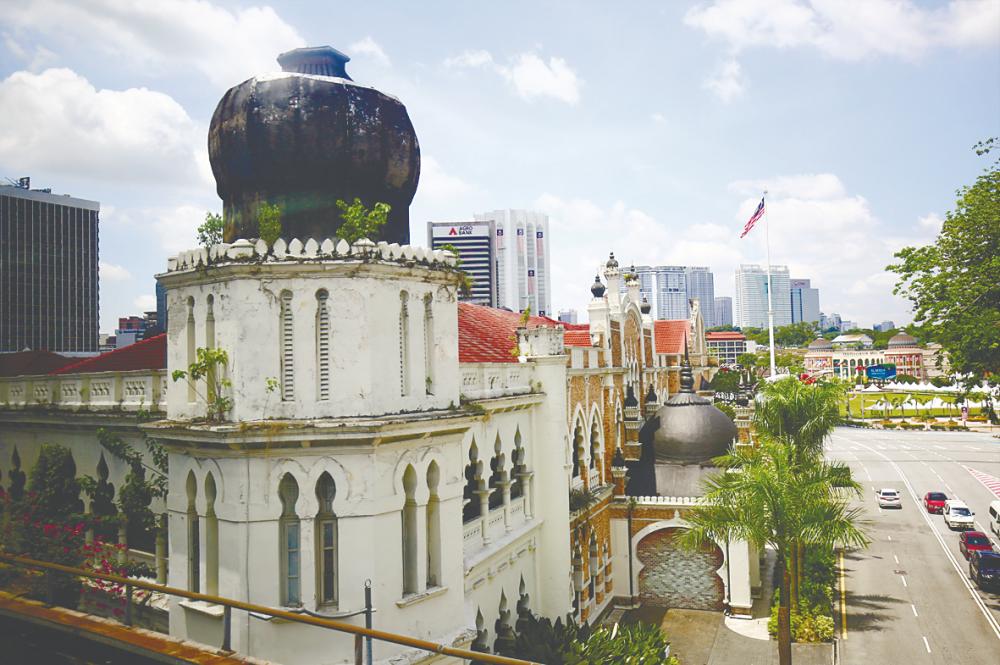PETALING JAYA: Heritage buildings in the country are at risk of damage and destruction due to a lack of priority by authorities in preserving them, said Universiti Kebangsaan Malaysia Architecture and Built Environment Department senior lecturer Dr Kamarul Afizi Kosman.
“The National Heritage Department should strictly enforce the National Heritage Act 2005 and other relevant laws to ensure the preservation of heritage buildings. “Government officials must be better educated on preservation to ensure the maintenance of national heritage buildings is on par with those of developed countries.”
He said heritage buildings reflect the identity of a nation at a certain place and time in history, and ought to be given better care.
He also said the former Federated Malay States Survey Department building at the intersection of Jalan Raja and Jalan Tun Perak in Kuala Lumpur has been neglected and abandoned for over 20 years, with parts of its ceiling and walls collapsing.
In 2006, Bok House, which was an old mansion owned by a private trustee managed by the Bok family in Jalan Ampang, Kuala Lumpur, was demolished, resulting in a public outcry.
The mansion was completed in 1929 by local millionaire and Cycle and Carriage owner Chua Cheng Bok.
On Dec 21, 2006, then Culture, Arts and Heritage minister Datuk Seri Rais Yatim challenged critics to provide evidence that Bok House held historical significance as he said: “The cost of rehabilitating Bok House would be high and there is no significant history or aesthetic value attached to the building.”
“The callous indifference to Bok House has influenced civil servant thinking towards the direction of the country, which once had great achievements in culture, technology and art,”
said Kamarul Afizi, adding that preserving heritage buildings involves not only physical restoration but also extends to safeguarding their historical and cultural identity for future generations.
“The government needs to provide more research grants to institutions of higher learning
to conduct research and documentation on heritage buildings in the country.
“A higher budget from the government is needed for the preservation of heritage buildings under its responsibility.”
He said poor workmanship, the use of new materials that do not align with the building’s original specifications and the introduction of commercial elements without adequate research during preservation activities could cause the withdrawal of a building’s heritage status.
“Development projects must ensure heritage buildings are preserved. Their existence must
be appreciated while new developments should be designed such that they do not kill the character of the former.”
A Malaysian Heritage Agency council spokesman said it had previously called on local authorities to establish a steering committee comprising relevant agencies to oversee the preservation of iconic heritage buildings before irreversible damage occurs.
“Poor preservation continues with concerning frequency and no agency has taken responsibility for it. The main issue lies in the enforcement of laws.
“Regardless of how well crafted the regulations are, they are ineffective if not properly implemented and upheld by authorities entrusted to do so.”
The council said although efforts have been made to preserve heritage buildings, regular maintenance is often neglected after project completion.
“There is a clear lack of a long-term preservation plan, leaving unanswered questions, such as who will occupy the building, who will be responsible for its upkeep and what its future purpose will be.
“Despite occasional restoration or repairs, no consistent efforts have been made to maintain the structures, leading them to repeatedly fall into disrepair and causing a vicious cycle of neglect and decay.”









